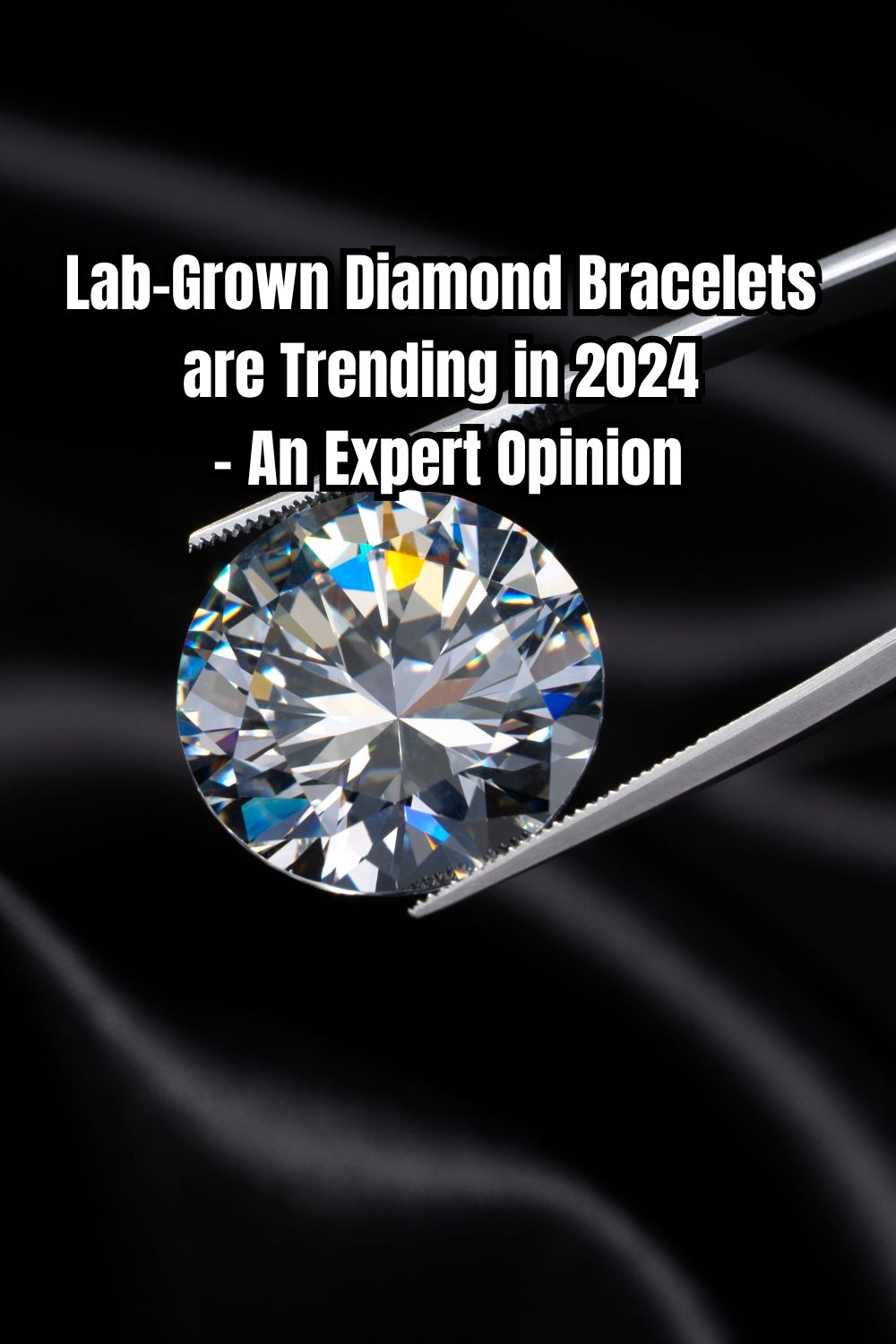Did you know lab-grown bracelets are trending in 2024? Find out an expert opinion on these gorgeous bracelets!
Lab-Grown Diamond Bracelets are Trending in 2024 – An Expert Opinion
Lab-grown diamonds have gained significant popularity in recent years, offering a sustainable and affordable alternative to traditional mined diamonds. One of the most sought-after categories of lab-grown diamond jewelry is bracelets. Their versatility, elegance, and ethical appeal have made them a prominent trend in 2024.
This article will discuss the factors driving the surge in popularity of lab-grown diamond bracelets. We’ll also explore the diverse range of styles available and provide insights from industry experts.
Rising Popularity of Lab-Grown Diamond Jewelry
According to Statista, the lab-grown diamond industry has experienced consistent growth over the past decade, driven by technological advancements and increasing market participation. The market is projected to expand significantly, with global production expected to reach nearly 19.2 million carats by 2030.
Their market value is forecasted to hit approximately 52 billion USD, reflecting a substantial increase in consumer demand. Additionally, lab-grown diamonds are anticipated to account for around 10% of the global diamond market by 2030.
This growing interest is fueled by cost efficiency and environmental benefits, positioning these diamonds as a prominent and sustainable choice in the jewelry market.
Design Trends in Lab-Grown Diamond Bracelets
Lab-grown diamond bracelets have emerged as a popular accessory in 2024, offering a wide range of designs to suit various preferences. Whether you prefer timeless elegance or contemporary style, there’s a diamond bracelet to suit every preference.
According to Forbes, popular designs and styles include:
- Stackable bracelets: Stackable bracelets with smaller diamond settings are a popular trend, allowing for customization and personalization. Brands offer stylish stacking options with varying diamond weights and gold settings.
- Teardrop-shaped bracelets: Delicate teardrop-shaped bracelets with lab-grown diamonds add a touch of elegance and sophistication. The Icon and Hope bracelets are examples of this style.
- Chain-link bracelets: These bracelets with a diamond-accented clasp or pendant are a versatile and modern choice. The Chuva and Amor bracelets feature this design.
- Pavé-set bracelets: Bracelets adorned with pavé-set diamonds offer a dazzling and luxurious look.
- Friendship bracelets: These bracelets with lab-grown diamonds are a meaningful and stylish option. The Diamond Bar Friendship-style bracelet is a popular example.
- Modernist designs: Modernist-inspired bracelets with geometric shapes and clean lines are a contemporary choice. The Chain-Link bracelet and Toggle bracelet exemplify this trend.
- Eternity bands: Eternity bands with continuous diamond settings symbolize eternal love and commitment.
- Wave-inspired bracelets: These bracelets with flowing diamond designs offer a unique and eye-catching look.
- Petite circle bracelets: Minimalist petite circle bracelets with diamond accents are a sophisticated choice.
- Heart-shaped tennis bracelets: Bold and romantic heart-shaped tennis bracelets with lab-grown diamonds make a statement.
The most popular settings options in diamond bracelets include:
- Classic prong setting: The classic prong setting is a timeless choice for diamond bracelets, offering a secure and elegant hold.
- Bezel setting: The bezel setting provides a sleek and secure enclosure for lab-grown diamonds, protecting the edges and creating a smooth look.
- Half-bezel setting: The half-bezel setting offers a semi-encased look, combining elements of the prong and bezel settings.
These design trends and styles showcase the versatility and appeal of lab-grown diamond bracelets, making them a sought-after accessory for fashion-conscious individuals.
Market Comparison: Lab-Grown vs. Natural Diamond Bracelets
The market for lab-grown diamond bracelets has been steadily growing, particularly in comparison to natural diamond bracelets.
Celebrities like Taylor Swift and Rihanna have been seen wearing these stylish accessories, further increasing their appeal. Additionally, online searches for “lab-grown diamond tennis necklaces” and “lab-grown tennis bracelets” have doubled in the past year.
Grown Brilliance emphasizes the affordability of lab-grown diamonds as a major factor contributing to their market popularity. Compared to natural diamonds, lab-grown diamonds offer a more accessible option for consumers. The ability to purchase larger or higher-quality lab-grown diamonds at a significantly lower cost than natural diamonds is appealing to many.
Frequently Asked Questions
Is it wise to buy lab-grown diamonds?
Yes, buying a lab-grown diamond is wise. Unlike synthetic options like cubic zirconia, lab-grown diamonds are chemically and physically identical to natural diamonds. They offer the same quality and brilliance, making them a valuable and ethical choice for those seeking genuine diamond alternatives.
What is the lifespan of lab-grown diamonds?
Lab-grown diamonds are as durable as natural diamonds. They share the same physical and chemical properties, ensuring their longevity. With proper care, these diamonds will maintain their brilliance and quality for generations, just like natural diamonds.
What color lab diamond is best?
The best color for lab-grown diamonds is D, which is colorless, followed by E and F. For clarity, the highest grade is IF (internally flawless), with VVS1 and VVS2 (very, very slightly included) also offering excellent clarity. These grades ensure the highest quality and brilliance in lab-grown diamonds.
The growing popularity of lab-grown diamond bracelets reflects a significant shift in consumer preferences towards sustainable and ethical jewelry options. With prominent celebrities endorsing these eco-friendly gems and rising search interest highlighting their appeal, lab-grown diamonds are making a mark. Offering a blend of affordability, quality, and ethical sourcing, these diamonds provide an attractive alternative to traditional natural diamonds.


Leave A Reply!